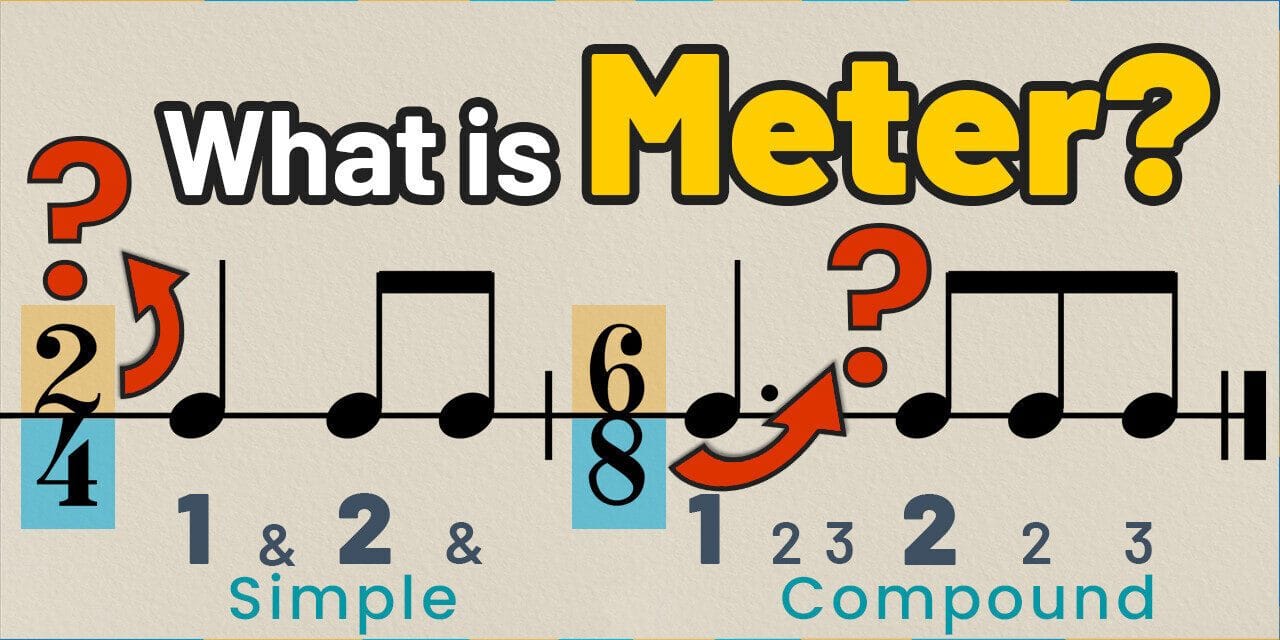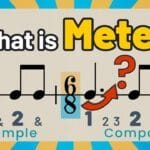Have you ever wondered about the difference between rhythm and meter? Or how time signatures like 2/4, 6/8, or 7/8 really work and sound?
In this lesson, we explore these essential musical concepts with clear examples from classical music, helping you understand and recognize them with ease.
Rhythm and Meter: The Foundation of Musical Flow
Every piece of music has a flow through time, created by the length of notes and silences — this is rhythm.
Meter is a special kind of rhythm that organizes the music into repeating patterns of strong and weak beats.
In some music, like Gregorian chants, rhythm flows freely without a strict structure. In others, like Handel’s “Hallelujah,” music is divided into regular sections called measures, defined by bar lines and time signatures.
While rhythm exists in all music, meter is present only when there’s a steady pulse, the heartbeat of music.
Note Durations and Measures
Notes have relative lengths based on the meter and tempo. Here are the most common note durations:
- Whole note – Longest (about 4 beats)
- Half note – Half as long (2 beats)
- Quarter note – A basic unit (1 beat)
- Eighth note – Half of a quarter note (½ beat)
- Sixteenth note – A quarter of a beat
A **dotted note** extends the note’s duration by half its value — for example, a dotted half note lasts 3 beats.
Measures (or bars) group a set number of beats together, separated by bar lines. The first beat in a measure usually carries a natural emphasis.
Time Signatures Explained
At the beginning of metric music, a time signature defines how the music is structured:
- The **top number** shows how many beats are in each measure.
- The **bottom number** indicates which note value gets one beat.
For example:
- 2/4 – Two quarter-note beats per measure
- 6/8 – Six eighth-note beats per measure (often grouped into two beats)
- 5/4 – Five quarter-note beats per measure
The bottom numbers typically represent: 1 (whole note), 2 (half note), 4 (quarter note), 8 (eighth note), or 16 (sixteenth note).
Simple, Compound, and Irregular Meters
Meters fall into three main categories:
- Simple Meter – Each beat divides into two equal parts (e.g., 2/4, 3/4, 4/4).
- Compound Meter – Each beat divides into three equal parts (e.g., 6/8, 9/8, 12/8).
- Irregular (or Asymmetric) Meter – Combinations of simple and compound beats within one measure (e.g., 5/4, 7/8).
Examples from classical music:
- 2/4: “Les Toreadors” from Bizet’s *Carmen*
- 3/4: Brahms’ *Lullaby*
- 4/4: Beethoven’s *Ode to Joy* (also called “common time”)
- 2/2: Haydn’s *Symphony No. 104* (“cut time”)
- 6/8: Grieg’s *Morning Mood* (compound 2-beat meter)
- 9/8: Bach’s *Jesu, Joy of Man’s Desiring* (compound 3-beat meter)
- 12/8: Tchaikovsky’s *Symphony No. 5* (compound 4-beat meter)
- 5/4: Tchaikovsky’s *Symphony No. 6* (irregular meter)
- 7/8: Prokofiev’s *Piano Sonata No. 7* (irregular meter)
Why It Matters
Understanding rhythm, meter, and time signatures is essential for mastering sight-singing, improving your sense of pulse and timing, and deepening your appreciation of musical structure.
As you continue learning, try to listen actively for meters and rhythms in the music around you.
You’ll start hearing patterns everywhere — and that awareness will make you a stronger musician.
Watch the Full Lesson
Learn more about rhythm, meters, and time signatures with real examples in the full lesson video:
If you enjoy lessons like this, subscribe to SightSingy on YouTube for more insights on sight singing, ear training, and music theory!







